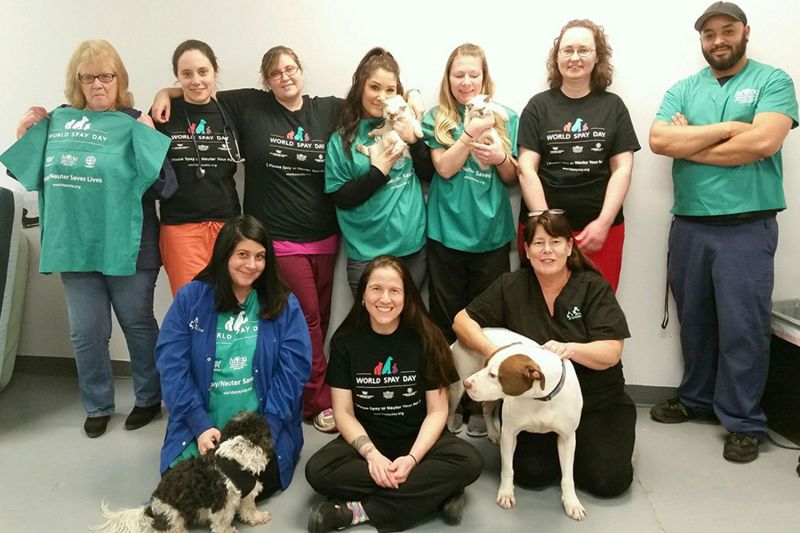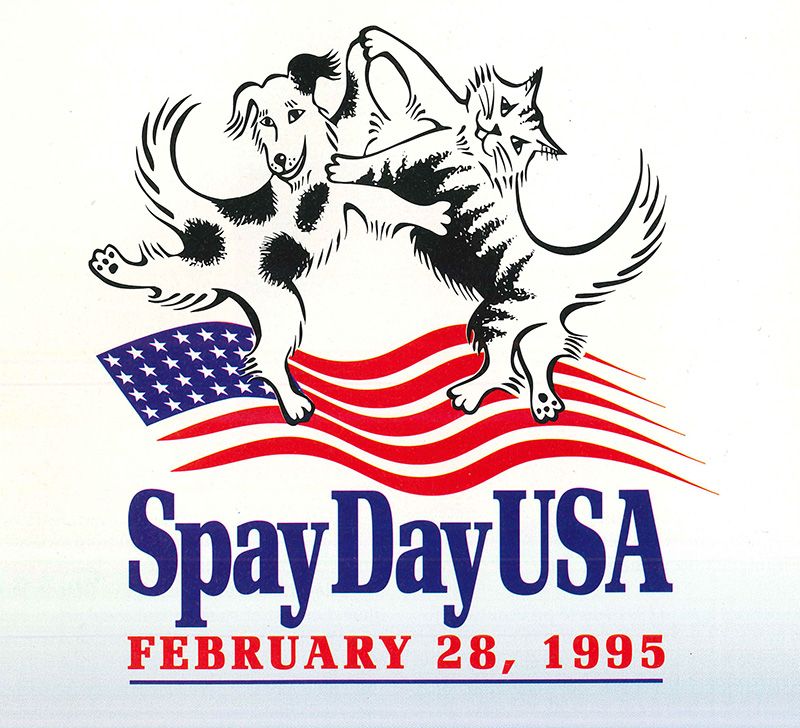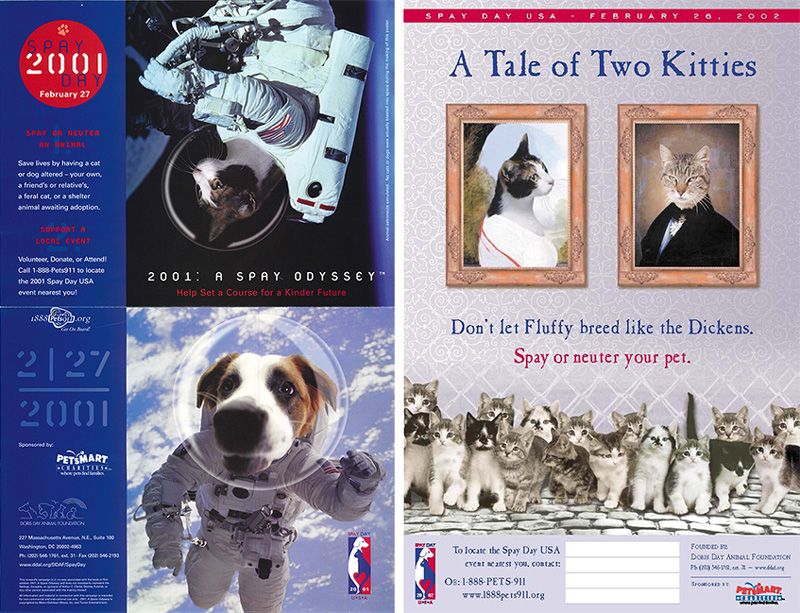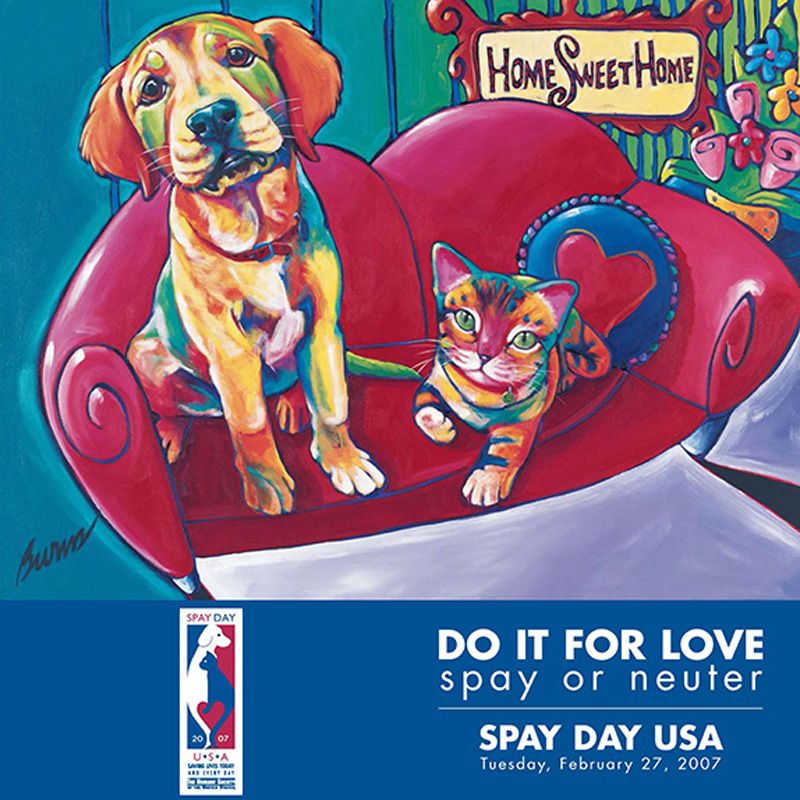World Spay Day, then and now
Long time Spay Day coordinator Vicki Stevens traces how campaigns have evolved throughout the years
February 28, 2017

“Don’t bore me. Make it interesting. Creative!” I don’t recall if these were the exact words my new boss, Holly Hazard, used when tasking me with revamping the Doris Day Animal Foundation’s annual Spay Day USA back in the fall of 2000, but that was the essence of her command. Holly, along with the Foundation’s co-founder and namesake—legendary singer and actress Doris Day—created Spay Day USA under the auspices of the Doris Day Animal League (now a part of The HSUS) and kicked it off in 1995 to “encourage every humane American to take one dog or cat to a veterinarian to have the animal spayed or neutered.” At that time, it was estimated that between 10 and 12 million cats and dogs were being euthanized in shelters each year, primarily due to a lack of resources. Spay Day USA was an attempt to shine a national spotlight on this tragedy and inspire everyone who cares about animals to take responsibility for solving it.

Despite an innocent faux pas with the poster graphic (some people were offended by the cartoon image of a cat and dog who appear to be dancing on an American flag—whoops!), the first Spay Day USA resonated strongly with the humane community. This trend has continued over the years with hundreds of organizations—maybe even yours?—participating by raising spay/neuter funds, working with legislators to pass Spay Day resolutions, and spaying or neutering more than a million pets and community cats in conjunction with the campaign.
As a result of your hard work—both during Spay Day and year round—great progress has been made in this country in the 23 years since that first Spay Day USA. The estimated annual number of cats and dogs euthanized in shelters has dropped by as much as 26 percent, to 3.1 million, and pet ownership has risen. Even still, an estimated 2.4 million of the animals euthanized each year are healthy and treatable and would make great pets. With increased adoption and newly targeted spay/neuter efforts, we have a chance at getting this number to zero. For example, about 29 million Americans seek to add a new pet to their families each year. We need only a fraction of these people—a mere 8 percent—to adopt a cat or dog from a shelter or rescue to end the euthanasia of adoptable cats and dogs. To help tackle this problem, The HSUS and Maddie’s Fund have partnered with the Ad Council to create The Shelter Pet Project, a national campaign that uses professionally crafted public service announcements to drive potential adopters to local shelters and rescues.
Further, nationwide, 88 percent of cats and dogs kept as pets in the U.S. are spayed or neutered. Incredible! Yet, in underserved communities where pet care information and resources are severely limited or nonexistent, The HSUS’s Pets for Life program has found that the situation is nearly exactly opposite—90 percent of cats and dogs are unaltered. These animals are unaltered not because their guardians are opposed to spay/neuter or don’t want to alter their pets, but because there is a lack of accessible, affordable spay/neuter information and services in these communities. And of the 30-40 million community cats in the U.S., only about 2 percent are spayed or neutered. In addition to increased adoption, reaching our underserved communities and populations of community cats with spay/neuter services is crucial to continuing to drive down the national euthanasia rate.
When we look outside of the U.S., we see that there are some 300 million dogs living on the street—many born as the result of allowing pets to roam unaltered—and at risk of inhumane population control methods such as poisoning, electrocution and shooting. To help raise awareness of the worldwide need for spay/neuter, in 2012 we changed the name of Spay Day USA to World Spay Day. The HSUS, HSVMA and Humane Society International encourage animal advocates around the globe to use World Spay Day to draw attention to these areas of greatest need and potential impact—underserved communities, community cats and street dogs—and to inspire like minds to take action locally.

Another thing that has changed since the early days of Spay Day USA—we’ve learned more about what effective spay/neuter messaging looks like. Examples of the Spay Day USA campaign messages I created or helped create include “2001: A Spay Odyssey,” “A Tale of Two Kitties: Don’t Let Fluffy Breed Like the Dickens” (a personal favorite) and “Do It For Love” (see these above in the photo scroll). While these slogans and the accompanying artwork met the criteria of “interesting” and “creative” (and I was quite proud of them), they may not have been as successful as they could have been in motivating pet guardians to have their cats and dogs spayed or neutered. After Hurricane Katrina, The HSUS and Maddie’s Fund funded spay/neuter messaging research and found that cute, humorous messages—while appealing to those of us in the animal welfare field—don’t resonate with pet guardians who view spay/neuter as a serious issue. It turns out the most convincing messages include local euthanasia statistics with a reminder that the offspring of one’s own unaltered pet might find themselves in a shelter. You can read the full report here.
While the messaging and target audiences may have changed, the work to ensure each cat or dog has a loving home continues. To those of you participating in World Spay Day today—and to those of you who have participated in Spay Day USA in years past—thank you. I’d love to hear your favorite Spay Day story in the comments below.

The HSUS is grateful to the Doris Day Animal Foundation for supporting the work of Pets for Life, allowing us to provide spay/neuter services to so many people and pets in honor of World Spay Day.


